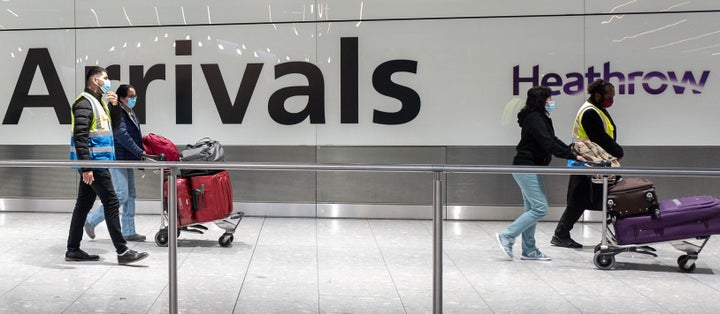
A traffic light system to categorise countries based on their coronavirus risk levels forms part of potential plans to restart overseas holidays, the government has said.
The recommendations by the UK’s “global travel taskforce”, led by transport secretary Grant Shapps, outline how international trips could safely resume – though the earliest this could happen is in mid-May.
On Friday, Shapps said for the first time in “many months” he was not advising against people booking overseas summer holidays.
Speaking to Sky News, the transport secretary said people could “start to think” about international travel. “I’m not telling people that they shouldn’t book summer holidays now,” he said. “It’s the first time that I’ve been able to say that for many months.”
What do the traffic light colours actually mean?
Countries will be labelled green, amber or red based on their Covid-19 risk levels, which will determine what precautions and restrictions passengers will be required to follow before and after travel.
Red-listed countries: As with the government’s current “red list” restrictions, arrivals from these countries will be required to quarantine for 10 days in an approved hotel. They must also take a pre-departure test and a further PCR test on days two and eight after their return to the UK.
Amber-listed countries: Arrivals will be required to quarantine for 10 days, and take a pre-departure test and a PCR test on days two and eight of their return to the UK – with the option of a “test to release” on day five to come out of self-isolation early.
Green-listed countries: Arrivals will be required to take a pre-departure test and another PCR test on or before day two of their return to the UK. No quarantine or additional tests will be needed unless they receive a positive test result.
How will the government decide?
A country’s risk level will be assessed based on factors including the proportion of their population that have been vaccinated, the rate of infection, and the prevalence of variants of concern.
The categorisation of each country will be kept under review and will respond to “emerging evidence”, while a “green watchlist” will be introduced to identify countries most at risk of moving from “green” to “amber”.
The government has said it will set out by “early May” which countries will fall into which traffic light category and also confirm whether international travel can resume from May 17.
Restrictions will then be “formally reviewed” on June 28 to take account of “the domestic and international health picture and to see whether current measures could be rolled back”.
How much will it cost?
Under the traffic light system, arrivals will have to book a “quarantine package” or “test package” from a government list of providers depending on where they are travelling to. All arrivals from green, amber and red countries will be required to take pre-departure and post-arrival Covid-19 tests.
Post-arrival tests must be polymerase chain reaction (PCR) type which could cost about £120, the government has said.
Members of the travel industry have argued travellers arriving from low-risk countries should be allowed to take lateral flow tests, which are cheaper.
EasyJet chief executive Johan Lundgren said the requirement for PCR tests was “a blow to all travellers” and risked “making flying only for the wealthy”.
On Friday Shapps said he was looking to “drive down the costs” of tests. “I think they are too expensive and that may be that there needs to be more entrants in the market, and we’ll be taking a very close look at that,” he said.
The government has said it will work with the travel industry and private testing providers to reduce the cost of foreign trips – which could lead to free pre-departure tests and cheaper tests when holidaymakers return.
Lateral flow vs PCR testing
PCR testing is seen as the “gold standard” for identifying infection, but it can take more than 48 hours to return results, leaving quite the gap for transmission to occur.
Lateral flow testing does not require laboratories and is far quicker, returning results in about 30 minutes. But questions have been raised over their accuracy.
With hospitals across Europe at breaking point under a third Covid-19 wave, PCR tests can enable scientists to detect new Covid-19 variants of concern and help stop them from being imported into the UK.
In England, only lateral flow tests will be available for everyone under the government’s new free, twice-weekly coronavirus testing scheme, which Boris Johnson has said will help stop fresh outbreaks and enable authorities to identify and control new variants of the disease.
What about vaccine passports?
No mention was made of “vaccine passports” in Friday’s report, but the government said the UK will play a leading role “in the development of international standards around a digital travel certification system”.
